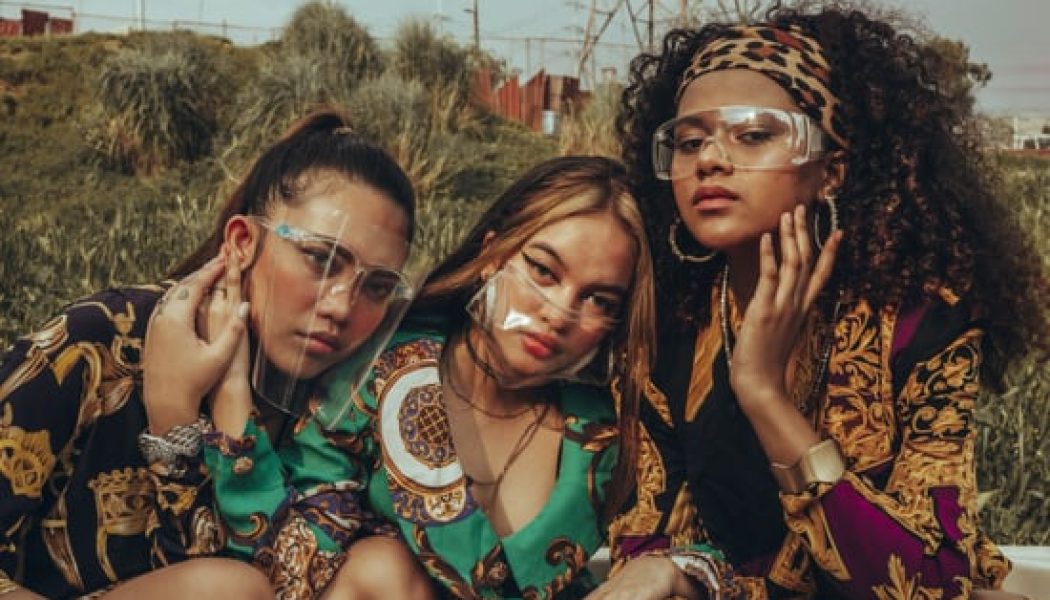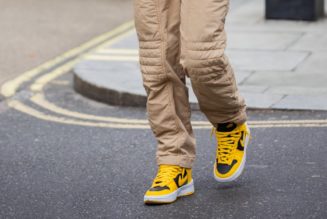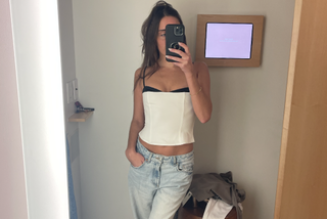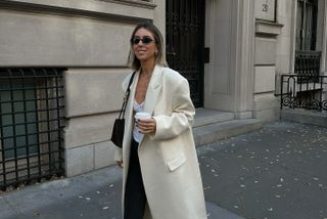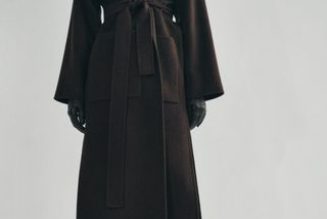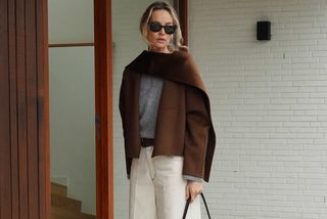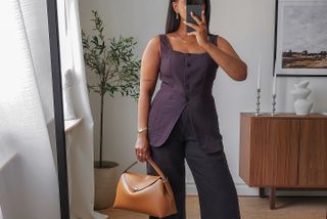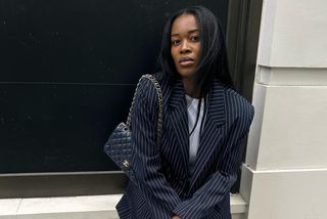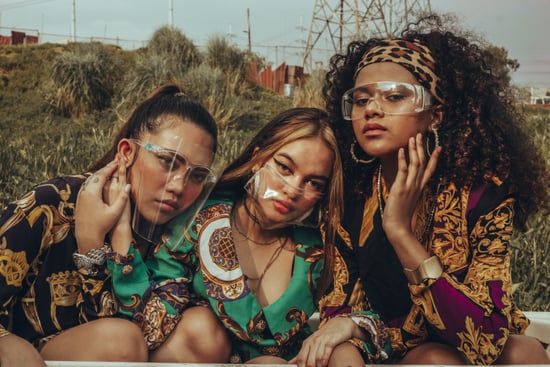
What History Tells Us About How the Coronavirus Pandemic May Change How We Dress in the Future
There’s no doubt that COVID-19 has completely changed our lives. But the pandemic will also have a lasting effect on our relationship with fashion.
London Fashion Week went digital in 2020, Hanifa sent 3D models down the runway, and loungewear sales have skyrocketed ever since. Since we’ve had nowhere to go, the trend cycle has been completely disrupted. Even once the pandemic (finally) comes to an end, the effects that it will have on the world — and the fashion industry — are sure to linger.
Major historical events have always changed the way people dress. The 1918 flu pandemic, the Great Depression, and the Second World War all affected fashion, both during the event and in the years that followed. But would a shake-up to the current fashion industry be such a bad thing? We have been stuck in the cyclic pattern of fashion trends, one that sees us recycling fads from decades prior, and often spending money on cheap, unsustainable fast-fashion replicas that never last long. So let’s look back at the fashion upheavals of the past to help predict how our style will change in the coming months and years.
Fashion Trends Will Slow Down
Millions of people have been retrenched or furloughed over the last year as the pandemic slowed down some industries and brought others to a complete halt. This means that millions of consumers have less disposable income, which has already affected their shopping habits. People are focusing on investment pieces that will be fashionable for longer than just a couple of months.
Influencers like Jayde Archives, who has more than 50,000 Instagram followers, is already capitalising on this trend. Archives recently dedicated an entire blog post to her “comfort covid capsule wardrobe,” which includes 37 pieces of a variety of T-shirts, blouses, and cardigans in a pastel colour palette. This means individuals will be more eager to shop for core wardrobe pieces such as blazers, dresses, and statement skirts while turning away from short-term fast fashion trends, and the poor-quality clothing that comes with them.
This isn’t too dissimilar to what happened during the Great Depression and the 1930s. Spending money during this time took a backseat, as people were too busy focusing on making sure that their basic needs were met financially. Consumers were already starting to turn away from fast fashion even before the pandemic hit. There’s been a noticeable shift in the industry as shoppers pay more attention to their clothes, and who’s making them. Customers are changing the way that they view their closet, and investing money in clothing that is sustainable and ethically made.
One catalyst for this was the Rana Plaza garment factory collapse in 2013. The factory infrastructure had been neglected for years, and 1,134 garment workers lost their lives. Some of the big-name brands that had clothes made here included Primark, Mango, and Matalan. Last year, when COVID-19 first struck, the public was made aware of popular retailers like Primark cancelling £2.4 billion worth of orders — leaving over two million garment workers without a job, and many without pay. This was another event that helped open people’s eyes to what was happening behind the closed doors of the popular stores that they support.
We Will Seek Comfortability
No one wants to be donning an uncomfortable pair of trousers or a restrictive top when they’re working from their bedroom. This means that, for the undetermined future, people will continue to relax in tracksuits, baggy T-shirts and comfy jumpers. When the pandemic first hit, tie-dye loungewear took over our Instagram and TikTok feeds, with people either buying matching sets online or making them at home. In the United Kingdom in March and April 2020 alone, loungewear and casualwear sales surged by 49 percent according to a study by Epsilon-Conservant. Does this mean more fashionable pieces are gone forever? Not likely. There will come a time when people’s loungewear will remind them of the pandemic, so they’ll be clamouring for more powerful pieces. In the meantime, enjoy that comfy jogger and jumper set that you’ve been wearing all week.
The House Dress Will Make a Reappearance
Although wearing sweats feels like an absolute luxury at the moment, sometimes you want to feel put together without any real effort. This is where the house dress comes in, which has recently been rebranded as the nap dress. Whether you call it a nap dress or a house dress, it’s a loose-fitting design comfortable enough to lounge in. Once we start experiencing loungewear fatigue and warmer days return, we’ll be reaching for our easy-to-wear dresses, comfortable blouses, and loose-fitting trousers instead. These pieces are the perfect way to elevate an outfit while still feeling comfortable in your own home.
Emma Roberts has been the queen of the house dress during lockdown. One quick scroll through her Instagram account and you will see gorgeous yet comfortable dresses throughout her feed. She was even wearing a beautiful dress when she confirmed her pregnancy in August. Although the house dress is mostly associated with the ’40s and ’50s, it is a descendant of the Mother Hubbard dress of the 19th century. The garment freed women from the constriction of corsets, crinolines, and bustles and provided them with the mobility they needed as they went about their daily tasks. Compared to the Mother Hubbard dress of the 19th century, the casual house dress of the 1950s was intended to be stylish and feminine as well as functional.
Ostentatious Luxury Will Be Gone
During the height of the Great Depression, society ladies opted to wear the past year’s dresses and jewels, which previously would have been a big no-no. Even though these wealthy women hadn’t yet felt the financial pinch, they accepted that new opulent outfits would be in bad taste, so they aimed to dress more plainly. Similarly to when the 2008 recession hit, dressing in excess stopped and then slowly made a comeback in the years that followed as people incorporated sequins, puffed sleeves, over-the-top jewellery, and feathers in their everyday outfits.
When you fast-forward to 2021, celebrities have faced backlash when they complained about spending lockdown in their lavish mansions, or flaunted their ludicrous wealth. Kim Kardashian, for example, was criticised when she took her family and friends away to a private island for her birthday, flaunting her excessive wealth during the peak of the pandemic. This kind of societal reaction could mean that we will see our relationship around wealth and status change as so many people continue to struggle. We’re already seeing a shift toward minimalistic fashion on social media, with influencers like Pernille Teisbaek and Estée Lalonde sharing photos of themselves wearing simple dresses, jumper and jogger sets, and more casual silhouettes.
It used to be the norm for influencers and celebrities to share their clout chasing “outfit of the day” posts on Instagram. More often than not, they were showing off expensive brands that the average person can’t afford, pigeonholing themselves as luxury influencers. Although this was once seen as “goals” for many, there will undoubtedly be more of a shift in how we wear things. Instead of people becoming fashion elites by having the latest season’s bag or top, people are now lauding relatability and ingenuity. In a post-COVID-19 world, society will have to think more about what truly constitutes fame and influence, as more sensitive content is crucial in order for influencers to future-proof their brand. When British Vogue chose to profile frontline workers across multiple covers, it felt representative of a crucial shift. And that’s going to spill over into the kind of stories brands are going want to tell.
There Will Be an Increase in Buying Second-hand
In the midst of World War II, the British Ministry issued a pamphlet titled “Make Do and Mend,” which was intended to provide housewives with useful tips on how to be both frugal and stylish during a time of harsh rationing. Some of the included tips were how to unpick old jumpers to re-knit chic alternatives and the best way to turn men’s clothes into women’s. Although we probably won’t go that far, many people are currently mending their clothing at home, learning how to knit, and buying second-hand.
The second-hand clothing movement was already gaining momentum before the pandemic, and now it’s ready to explode. It allows people to stay on-trend while still being thrifty, which is something that will most likely remain past the pandemic. This being said, we can’t discredit the fact that the second-hand clothing movement was bubbling up long before the pandemic started, thanks in large part to Gen-Z and the increasing focus on the environment and sustainability.
The younger generations have been fuelling second-hand clothing apps like Depop, with many making bank off of selling pre-loved clothing. Some people are even using the app to start their own brands and, for many, this has proven to be a highly profitable business venture. As climates continue to change, younger generations have been taking a long hard look at themselves, as well as society, to determine which habits need to be replaced so that we can improve our planet.
With fast fashion depleting non-renewable resources, emitting greenhouse gases, and using wasteful amounts of water and energy, Gen-Z are looking for other alternatives. An example of this is the three young designers Amin (Berlin, Germany), Graci Pepworth (Bristol, UK), and Cierra Boyd (Ohio, USA), who believe that upcycling is essential to the sustainable fashion movement. In their work they turn old trainers into chic corsets, tops, and bustiers.
We Will Capitalise on the Occasion of Dressing Up
As the old adage goes, “you don’t know what you’ve got ’til it’s gone,” which is definitely the case when it comes to the opportunity to dress up. Before the pandemic hit, we were used to regular invitations to dinners, parties, and other special occasions. Dressing up for these events had become something that was optional, with some opting to wear basic clothing instead of going all out. This will change when we will finally return to happy hours, dates, and house parties. The opportunity to finally get out of sweats and dress up will inspire even the least fashion-conscious people to make more of an effort than they ever did before.
This new love for dressing up will also see us opting for more tailored and unique pieces in a bid to move as far as possible from the joggers that we are currently used to. More creative and experimental outfits will most likely become the norm. We saw this same shift after the Second World War, when Christian Dior reinvigorated the fashion industry. He presented his debut haute couture collection in Paris in 1947, which was quickly named the “New Look.” Dior sent voluptuous silhouettes down the runway that featured cinched waists, A-line skirts, and soft shoulders. Such designs had never been seen before and they created new fashion standards that redefined femininity in a post-war society.
Face Masks Will Evolve Into a Fashion Staple
It almost goes without saying that face masks have become an integral fashion item since the beginning of the pandemic and it will most likely be the garment that defines this generation. There have been a number of different pandemics through the eras and each one has affected the human body differently — which, in turn, has dramatically changed fashion. Toward the end of the Victorian era, when tuberculosis was widespread, doctors discouraged women from wearing long skirts because it was thought that they swept up germs. They also thought corsets exacerbated tuberculosis by limiting the movement of the lungs and circulation of the blood. That being said, there will be a rise in the ‘fashionable masks’ industry, which we’re already seeing. World-renowned designer Lirika Matoshi sells masks that match her famous strawberry-print dresses, and Selfridges even has a page on its website titled “Women’s Designer Face Coverings & Face Masks.”
